A Wong (Number 3 on the Estrella Damm National Restaurant Awards 2017 list)
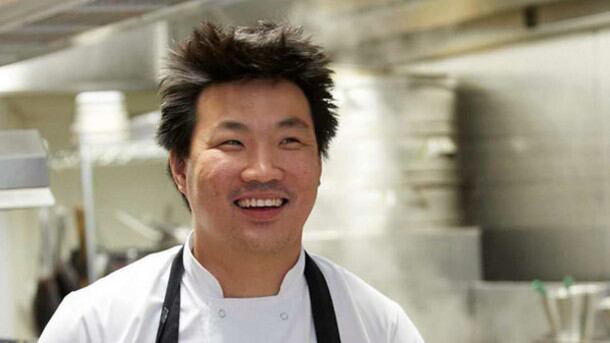
Photo: Andrew Wong
What: The little Chinese-style restaurant that could: from Chinese-born, English chef Andrew Wong, the Michelin-starred A. Wong has come to symbolise seriously good Chinese food in an understated-yet-refined setting, for great value – the latter of which is even more surprising given its Belgravia location near London Victoria Station.
Who: Andrew Wong re-opened what has his parents’ Chinese restaurant in 2013, having finished a degree in anthropology at the LSE before deciding his travels around China could be altogether more useful.
Key dishes: The Peking duck – famous for Wong’s 14-step fiendishly-tricky recipe ‒ is a highlight, but the restaurant’s dim sum is the ultimate draw. With paper-thin wrappers, and a vast array of fillings, the standout option is actually the sweet custard dim sum bun, which in 2016 critic Jay Rayner called “the single best dessert available right now in London”.
And another thing: Andrew Wong may use influences from across China in his dishes, but he’s still passionate about proper cooking, and appeared at this year’s Restaurant Congress event busting die-hard myths about Chinese food. Watch this space for a roundup.
Som Saa (number 4)
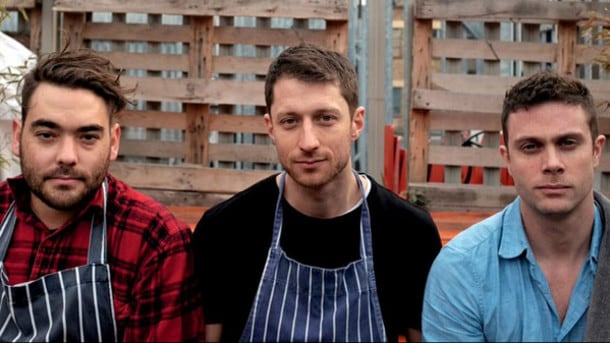
Photo: Andy Oliver, Mark Dobbie, and Tom George
What: A Thai pop-up-turned-permanentrestaurant specialising in bar snacks, sharing platters, and classic Thai brunch dishes. Having made its name as a pop-up at Climpson’s Arch in London Fields, the group raised £700, 000 in a super-successful crowdfunding campaign, and opened its first permanent venue on London’s Commercial Street in spring 2016.
Who: Andy Oliver, Mark Dobbie, and Tom George (of which the first two are chefs specialising in North and North-Eastern Thai cuisine), who have hailed the boom in Thai food in London over the past few years as a “revolution”.
Key dishes: The owners describe the food as having ‘big flavours’, and typical options include the Gaeng Daeng Moo Yang (a red curry of grilled pork, green banana, and holy basil), or – from the wok section – the Pad Char Ahaan Talay (a combination of stir fried prawns, clams and squid with lime leaves). There is also a bar serving Thai ‘drinking foods’ such as Laap Gay Thort, a mix of fried, Isaan style, minced chicken cakes with kaffir lime leaf, dry chilli and toasted rice. There is also a wide selection of teas, cocktails, wine and Asian craft beers.
And another thing: The team makes its own in-house curry pastes and daily fresh coconut cream.
Kiln (number 9)
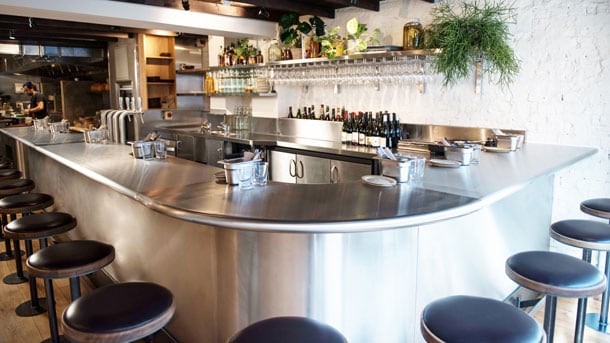
Photo: Kiln's distinctive countertop
What: A Thai grill restaurant in London’s Soho focused on an actual ‘kiln’ – or insulated furnace ‒ uses chestnut and oak logs to keep its flames constantly stoked, and which requires cooking over thick clay pots. The restaurant itself features bar stools, a long stainless steel counter the full length of the restaurant, an open kitchen, and a downstairs basement area for groups.
Who: Chef Ben Chapman, also of Smoking Goat (itself at number 49 on this year’s list, see below), who has a short history of working in food and is well-known for his close, original and attentive relationships with his suppliers. This results in practices such as buying the whole animal (so the supplier isn’t left with odd bits to sell later) and working with collectives such as Kernowasashimi in Cornwall.
Key dishes: Inspired by rural Thai flavours – as well as the region’s Burmese and Yunanese influences ‒ dishes are made with British-sourced produce, and a wide variety of herbs, vegetables and chillis, as well as meat such as the roast goose with pickled greens, and grilled aged sirloin. The signature suckling pig is a winner, and there are also daily changing noodle specials, including the Pressed Duck Gravy Noodles, based on a traditional broth made with roasted duck carcasses.
And another thing: Chef Ben Chapman is entirely self-taught, after a career that has also included time as a DJ, art gallerist, and designer. He cites Pitt Cue Co’s Tom Adams as an inspiration, and has said that his own lack of experience has actually led to his innovative, ‘how else can we do it?’ approach.
Hoppers (number 13)
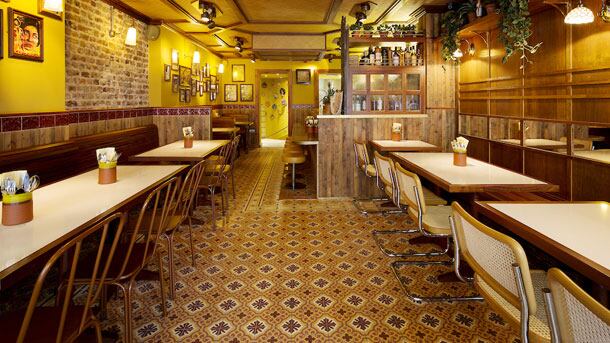
Photo: Hoppers' interior
What: Opened in 2015 in Soho, Hoppers was the third site from the super-successful Sethi siblings (also of Gymkhana, see below). Inspired by the roadside shacks of southern India and Sri Lanka, Hoppers aims to be fun, quick and accessible, focusing on the eponymous pancake-like ‘hoppers’.
Who: Karam, Jyotin and Sunaina Sethi of the JKS restaurants group, and the British-born, Indian-heritage trio behind the unstoppable Michelin-starred sites Gymkhana and Trishna. Backers of Bubbledogs, Kitchen Table, Lyle's & Bao, they taught London the true meaning of the word ‘hopper’.
Key dishes: Hoppers are thin, bowl-shaped pancakes made from fermented rice and coconut milk, served with a selection of ‘sambols’ and coriander chutney. The site also does dosas – crepes made from fermented ground rice and lentils. Add in starters such as bonemarrow varuval, a selection of ‘karis’, rice, roasts and ‘kothu’ (chopped meat) and you have some idea of Hoppers’ wide variety of quirky and creative Indian plates. Prices start at just £4.
And another thing: Hoppers doesn’t take bookings, and saw huge queues outside when it first opened. Just as well founder Karam Sethi once said he envisaged dining there to be a “under-45 minute” affair.
Gymkhana (number 22)
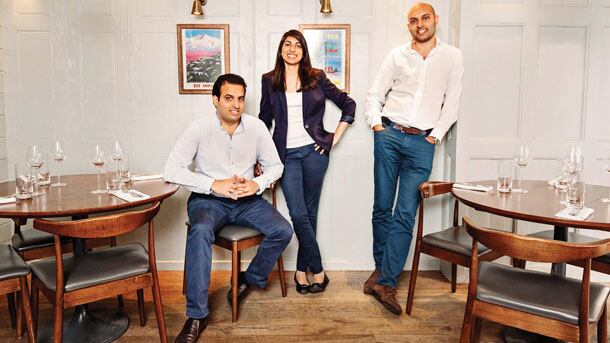
Photo: The Sethi siblings
What: Widely hailed as an ‘overnight smash’, Mayfair’s Gymkhana made London excited about Indian food again, and put the Sethi siblings firmly on the capital’s culinary map. Crowned the National Restaurant of the Year at the 2014 awards, it quickly won a Michelin star for its use of traditional spices, originality, and home-grown cooking techniques.
Who: Another hit from London-born Karam, Jyotin and Sunaina Sethi, with Karam as head chef and sommelier Sunaina taking charge of the wine list. Karam has little formal training ‒ save a year at The Sheraton, New Delhi, and on the tempura station at London restaurant Zuma ‒ but is largely inspired by travels to India, and his mother’s respect for traditional Indian techniques.
Key dishes: Named not for the equestrian event, but for the traditional Indian sports clubs Karam visited as a teenager, Gymkhana refuses to change its recipes for the Western palate. It offers a sharing-friendly menu, including a selection of kebabs, tikkas, curries and biryanis, plus a standout dish of pig’s cheek vindaloo.
And another thing: The signature kid goat methi keema is available with goats’ brains. Served alongside finely diced onion, it is intended to be sprinkled over the top (along with crispy fried potatoes) of the keema, to add a unique creaminess.
Smoking Goat (number 49)

Photo: Ben Chapman
What: The original Thai barbecue joint from Ben Chapman, which also describes itself as a “pestle and mortar and wood fire…Soho dive bar”. Focusing on a barbecue-style grill fuelled by sweet chestnut and oak cask wood, the restaurant champions rare breed meats and day boat fish, and sources its chillies, palm sugar and fish sauce directly from Bangkok.
Who: Self-taught chef Chapman is also the man behind Kiln (number 9 on the list), and it’s here that he founded his philosophy of working closely with suppliers and using authentic, compassionately-sourced ingredients.
Key dishes: With a more general focus on Thai cooking than Kiln, Smoking Goat focuses on smoked fish and meat from across the country. Dishes include Coal Roast Scallop Red Nahm Yum, Hot Smoked Chicken Gai Yang with red chilli jaew, Cornish Mackerel with nahm prik pao, Barbecue Chiang Mai Pork Belly, and the eponymous Smoked Goat Shoulder. Sides include classic spicy salads, unlimited amounts of sticky rice, and grilled hispi cabbage. A short wine menu completes the selection, and soft drinks include ‘goat sodas’ with tamarind, kaffir lime, or lemongrass.
And another thing: The restaurant runs ‘Offal Monday’ nights, from 6pm until late, in a bid to champion “undervalued animal extremities”. Dishes include deep fried lambs’ brains nahm prik, chicken liver lab, and calf liver nahm dtok.
Bao (number 69)
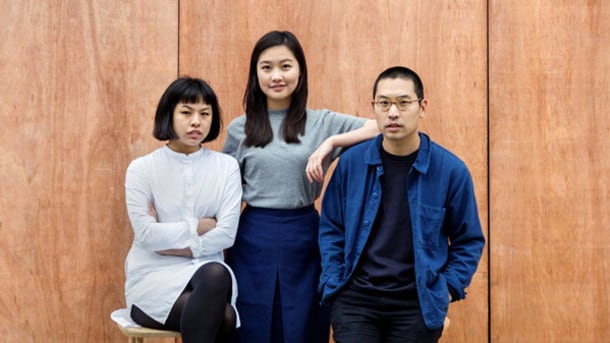
Photo: Shing Tat Chung and husband Erchen Chang, and Wai Ting Chung
What: The now-iconic pop-up turned permanent restaurant serving the much-copied Chinese steamed bao buns, stuffed with meat, fish or vegetable fillings. After making its name in the original BAO bar in Hackney, the first permanent restaurant opened in Soho in April 2015, and became an instant success. The second site, on Windmill Street in Fitzrovia, did just as well.
Who: Family trio made up of Shing Tat Chung and husband Erchen Chang, with Wai Ting Chung. The group aimed to bring lesser-known Taiwanese-style food to London, and have always made their bao buns in-house to their own signature recipe. They have since also opened higher-end Taiwanese site Xu, in Chinatown.
Key dishes: The now-ubiquitous steamed buns, which were arguably popularised in London by Bao. Despite their popularisation, Bao’s fillings are still recognisably Chinese, including options such as beef cheek and tendon nuggets, crispy cabbage with Sichuan powder, beef shortrib, XO sweetcorn with spiced beef butter, and cured beef ribcap. Sides include peanut milk and Taiwanese pickled cabbage. Desserts include peanut ice cream roon bing with coriander, and fried Horlicks ice cream.
And another thing: Bao’s permanent restaurants are backed by the Sethi siblings (also of Gymkhana and Hoppers, at xx and xx on this list respectively), who have also backed nearby Fitzrovia site Bubbledogs.
Kricket (number 80)
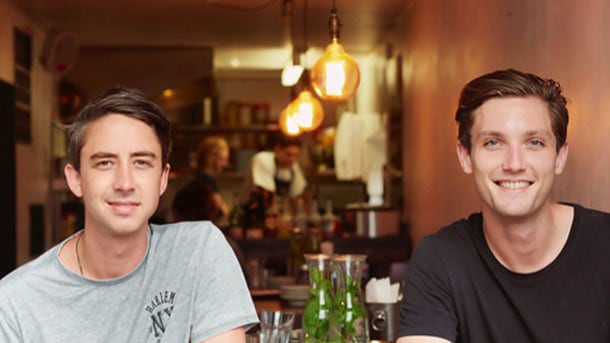
Photo: Will Bowlby and Rik Campbell
What: Another Indian-style smash hit, Kricket started life in 2015 as a pop-up at the Brixton shipping container development, Pop Brixton. From just 20 temporary seats, it opened its first permanent location in Soho earlier this year, and now has its sights set on another permanent location shortly.
Who: Founders Will Bowlby and Rik Campbell are now backed by the White Rabbit Growth Fund, but have said that when they first opened “they could never have anticipated the overwhelming support that we have continued to receive from locals, fellow traders, and chefs”.
Key dishes: With a simple menu split between breads and rice, veg, fish and meat, Kricket focuses on doing a small number of dishes exceptionally well. Using lesser-seen cuts of fish, seafood and meat, key examples include the Lasooni scallop with Goan sausage; tandoori monkfish with coconut chutney; Keralan fried chicken; and Gana’s pork cheek coorg with pickled fennel. Mango sorbet, and a small selection of original cocktails, plus bottled local beers and a select wine list complete the choices.
And another thing: Kricket is now closed in Brixton, giving its shipping container over to new venture Smoke & Salt. Charlie Gent, marketing director at Pop Brixton, said that Kricket “was what [the concept] was all about; helping talented and ambitious people get their big ideas off the ground”.
Sosharu (number 81)
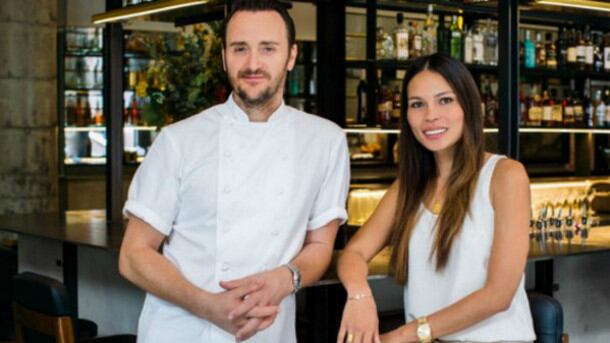
Photo: Jason and Irha Atherton
What: A Japanese izakaya-style, British-seasonal restaurant in London’s Soho from global restaurateur – and our Restaurateur of the Year 2017 ‒ Jason Atherton. Modelled on traditional Japanese ‘minka’ houses, there is also a cocktail bar, 7 Tales, downstairs.
Who: While Atherton, and his wife Irha, are the famous names associated with it, Sosharu is more deservedly attributed to Alex Craciun, who – with Atherton’s backing and blessing – travelled to Japan to study the cuisine and learn the techniques properly, before bringing them back to the UK. He also assembled a team of chefs and bartenders to help him deliver his new philosophy
Key dishes: Focusing on small plates, Sosharu offers Japanese specialities including tempura, sashimi, and hibachi grilled options. There is one a la carte menu each for lunch and dinner, and a ‘Taste of Sosharu’ sharing menu for two that includes plates such as English asparagus with smoked egg and Kyoto miso; and tokatsu crumbed pork with vegetable oroshi. It also offers afternoon tea, and original cocktails with translated Japanese names, such as ‘Kanso – Simplicity’, with gin, yuzu sake, grapefruit.
And another thing: Atherton recently announced plans to open a Sosharu in Shanghai, with Craciun at the helm.
Gunpowder (number 100)
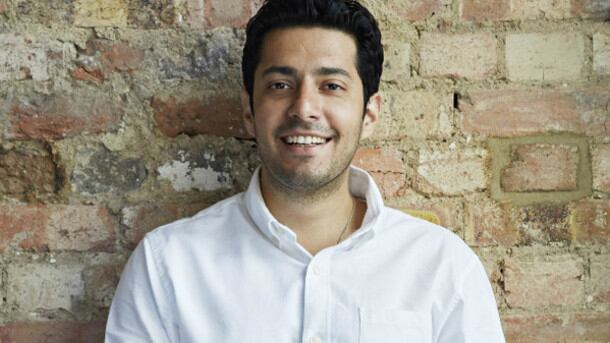
Photo: co-founder Harneet Baweja
What: Billing itself as a ‘home style Indian restaurant in Spitalfields’, Gunpowder is a small, family-run restaurant, and takes its cues from “vibrant and confident” family recipes. It was rewarded with a Bib Gourmand – awarded to sites serving three courses for under £28 – in the 2017 UK & Ireland Michelin Guide, and just squeezed in to this year’s Top 100.
Who: From husband-and-wife team Harneet (pictured) and Devina Baweja, with chef Nirmal Save ‒ previously of Mayfair’s Tamarind ‒ on the pass. Harneet spent summers in North East India visiting family, and opened Gunpowder with a view to bringing a new style of Indian dining to the UK.
Key dishes: Gunpowder purports to offer a new twist on traditional dishes, such as the ‘rasam ke bomb’, which has been described as a take on pani puri, and the smoky aloo chat, made with black chickpeas and spiced with fresh garam masala and tamarind. There are strongly-spiced lamb chops from Harneet’s mother-in-law’s recipe, and a ‘oothapam’ rice pancake stuffed with melt-in-the-mouth pulled duck.
And another thing: The same team recently launched Madame D’s, also in Spitalfields, this time with a menu directly inspired by the vast Himalaya, including dishes inspired by Nepal, Tibet, and China.
Check out the full Estrella Damm National Restaurant Awards 2017 list here
See the awards as they happened
Check out some of our high-profile attendees on the red carpet
